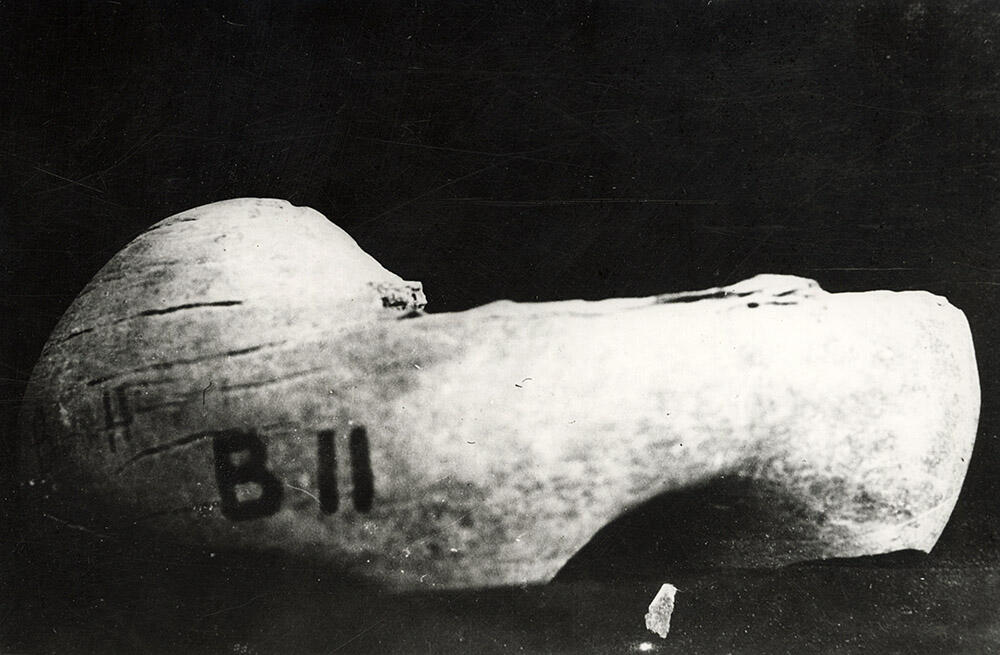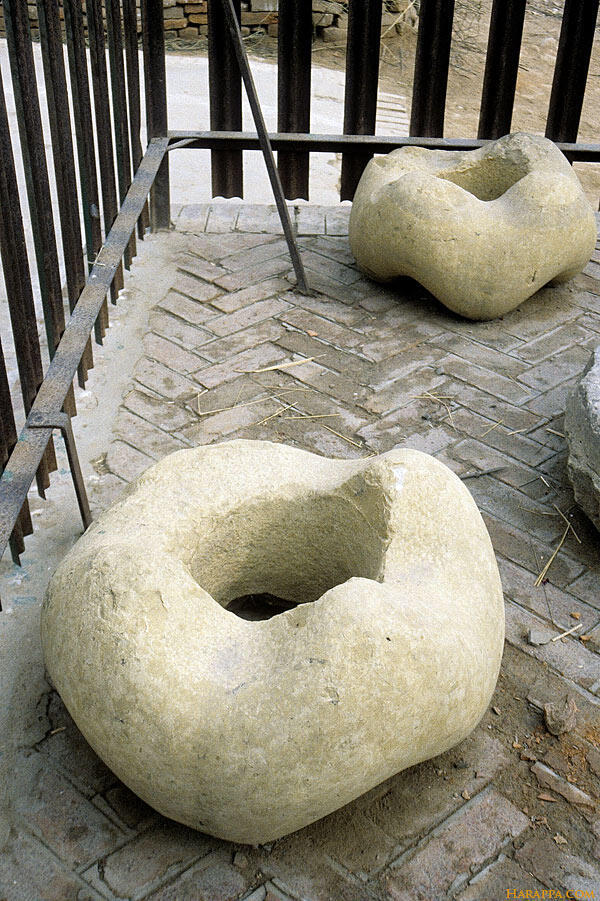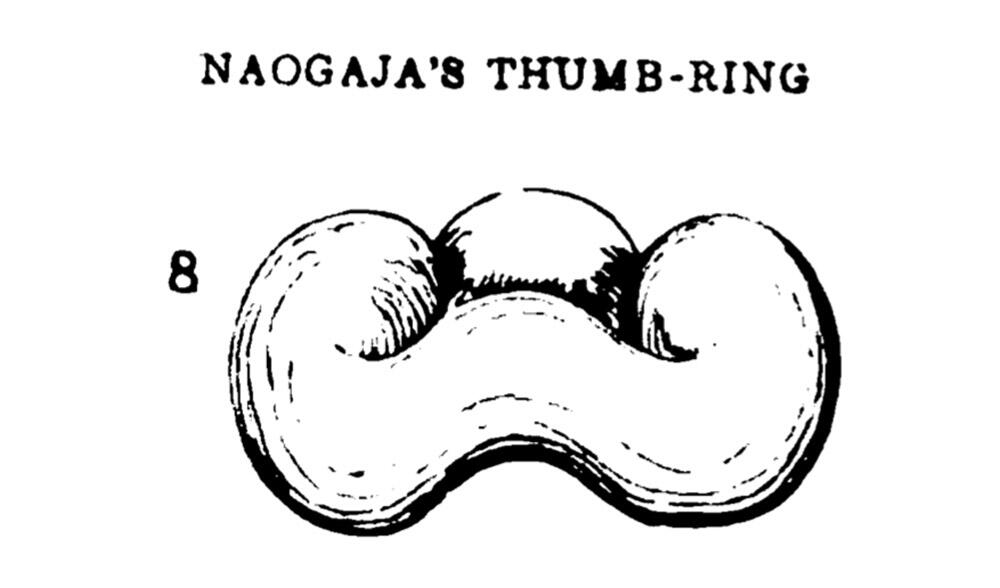"Most of these fragments were, however, easily identified as parts of the undulating rings, three complete specimens of which are lying on the site. The precise purpose of these rings is not yet ascertainable, and I have not seen anything like them at any other site.* The only conjecture I can offer is that they might be bases of finials of some kind which answered to the usual ribbed ornaments or amalaka of the Hindu and allied temples. One large stone contains a socket for the tenon of a door, while two other slabs measuring 3' 4" x 3' x 3i" thick must have been used in the covering of a roof."
- Daya Ram Sahni, Annual Progress Report of the Archaeological Survey [of India], Hindu and Buddhist Monuments, Northern Circle for the Year Ending 31st March 1921, p. 10.
Shown above [Image 2] are also the actual the ringstones found at Naugaza, displayed outside the tomb to visitors today (Close-up). Sir Alexander Cunningham's drawing [Image 3] of an undulating ringstone that, like the seal, was the most puzzling of Cunningham's his finds in 1872-3 is also shown.
"Many examples of both large and small undulating ringstones made of yellow limestone, banded limestone and other types of rock have been found at Harappa. For more examples from the HARP excavations see Harappa phase ringstone fragments, broken Harappa phase ringstone fragments, a ringstone in Harappa town, cleaning a complete ringstone and carrying the complete ringstone."
- Jonathan Mark Kenoyer, 2021.
*General Cunningham remarks that he saw similar objects in Multan.↩
B. 11 Fragment (diam. 3 1/2") of a diminutive stone ring similar to the two large ones lying on the site.
[Appendix D] 2816 A miniature undulating ring of cream-coloured stone (B 11).
[Original caption: A miniature undulating ring of cream coloured stone]






